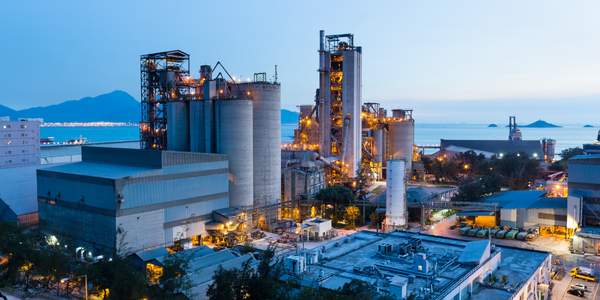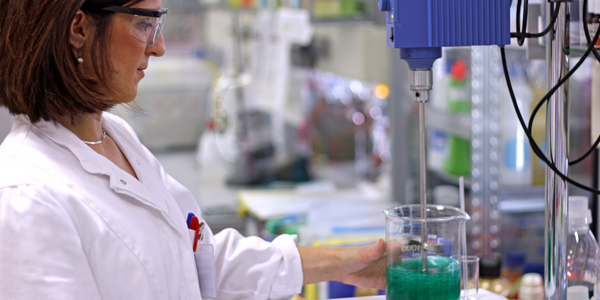Technology Category
- Sensors - Chemical Sensors
- Sensors - Liquid Detection Sensors
Applicable Industries
- Chemicals
- Education
Applicable Functions
- Product Research & Development
Use Cases
- Continuous Emission Monitoring Systems
- Onsite Human Safety Management
Services
- Training
About The Customer
Porsgrunn Municipality is a local authority located in one of Norway’s largest industrial regions. It has around 2,700 employees and serves 37,000 residents. The municipality is responsible for a wide range of services, including healthcare, environment and urban development, education, and administration. It is committed to reducing its greenhouse gas emissions and the use of chemicals. In support of this commitment, the municipality presented its first climate budget in early 2022, which included the reduction of chemicals as a concrete measure.
The Challenge
Porsgrunn Municipality, a local authority in Southern Norway, was faced with the challenge of reducing its greenhouse gas emissions and the use of chemicals. The municipality had 4,000 registered chemicals distributed among 44 businesses and 119 departments within healthcare, environment and urban development, education, and administration. The municipality's action program aimed to reduce 10% of chemicals by 2023. The challenge was not only to meet this target but also to ensure the safe use and handling of chemicals. Recent figures from the Norwegian Occupational Safety and Health Administration showed that over 200 Norwegians receive a cancer diagnosis each year from exposure to dangerous chemicals in the workplace. Furthermore, research highlighted that 20% of all lung cancer cases and 10-15% of all asthma cases in adulthood are due to work-related exposure to hazardous substances.
The Solution
To address this challenge, Porsgrunn Municipality presented its first climate budget in early 2022, which included the reduction of chemicals as a concrete measure. The municipality collaborated with EcoOnline to monitor, report, and assess the risks of chemicals. Many of the region’s employees were directly involved in the project through training and practical implementation. Greater awareness of the risks associated with chemical use led to EHS improvements throughout the region. It promoted safer alternatives and methods, such as replacing chemical products with microfibre cloths and water. A considerable number of workplaces were guilty of carrying unused chemical products due to inadequate purchasing procedures. The project also benefited firefighters in the region, who have an increased workplace risk of hazardous chemical exposures linked to toxic smoke.
Operational Impact
Quantitative Benefit

Case Study missing?
Start adding your own!
Register with your work email and create a new case study profile for your business.
Related Case Studies.

Case Study
Honeywell - Tata Chemicals Improves Data Accessibility with OneWireless
Tata was facing data accessibility challenges in the cement plant control room tapping signals from remote process control areas and other distant locations, including the gas scrubber. Tata needed a wireless solution to extend its control network securely to remote locations that would also provide seamless communication with existing control applications.

Case Study
Advanced Elastomer Systems Upgrades Production
In order to maintain its share of the international market for thermoplastic elastomers AES recently expanded its Florida plant by adding a new production line. While the existing lines were operating satisfactorily using a PROVOX distributed control system with traditional analog I/O, AES wanted advanced technology on the new line for greater economy, efficiency, and reliability. AES officials were anxious to get this line into production to meet incoming orders, but two hurricanes slowed construction.
Case Study
Wireless GPS Tracking & Security Monitoring
Enhancing the security of hazardous freight and ensuring compliance with Homeland Security’s Transportation Security Administration mandate that all trains carrying chemicals capable of creating a toxic inhalation condition are equipped with on-board safety monitoring systems.

Case Study
Field Device Asset Management For Chemical Company in China
Chinese chemical subsidiary of multinational corporation serves customers throughout the world. Sales offices and research and technology centers are strategically located to provide rapid response to customer requests. Just two workers were assigned to maintain thousands of intelligent instruments in three production units, so they could do little more than react to device issues as they appeared. This costly maintenance method inevitably led to unexpected downtime when a critical instrument failed. Plant management recognized the need to change from reactive to predictive maintenance for all assets, including instruments and control valves, but help was needed in implementing such a technology-based initiative.

Case Study
Industrial Workforce Mobility for Improved Safety & Operations
Huntsman Corporation, a global manufacturer and marketer of differentiated chemicals, undertook an aggressive program to eliminate injuries, product defects, and environmental releases at their Port Neches facility. Termed “Project Zero”, this program required a completely mobile solution to empower operations and maintenance personnel to capture defects, track work progress and make process and safety related decisions in real-time.








